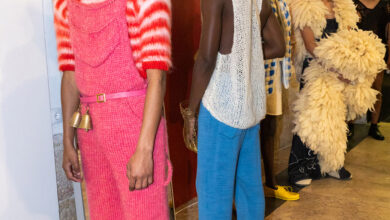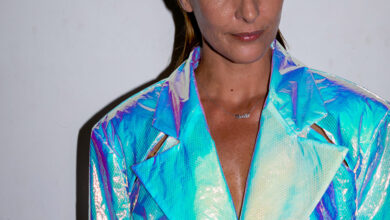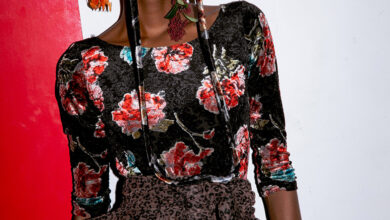ITS#TEN SPECIAL 2: WINNERS INTERVIEWS

Zoot Magazine dedicates a second special to the ITS#Ten competition, with interviews to the winners of the Fashion and Accessories categories.
Text by Anna Battista
An anniversary is always a special cause for celebration, but the tenth edition of the Trieste-based ITS# competition also turned into a celebration of menswear designers.

American Shaun Samson won the Fashion Collection of the Year Award for his garments based on the shapes of prison uniforms that seamlessly mixed together workwear fabrics, including tartan, plaid and Aran knits. Egon Schiele’s artistic prophecy about a fragile masculinity inspired instead the vision and the aesthetic of Niran Avisar, a graduate of the Shenkar College of Engineering and Design in Israel, who scooped the Diesel Award for his versatile unisex designs; Italian Kristian Guerra was awarded the Fashion Special Prize for his collection that, inspired by hand movements, looked at reinventing puffer jackets that altered the body silhouette.

Womenswear received a recognition through the Skunkfunk Award that went to Ruth Green, who combined the graphic lines of the Bauhaus with her colourful and voluminous knitwear. For what regards the Accessories category, the Collection of the Year Award went to Oliver Ruuger and his modern fetishistic and ritualistic objects, while the YKK Award was assigned to Laura Amstein for her collection of modern architectural bags.
Among the most interesting fashion designers there were Royal College of Art MA graduate Fah Chakshuvej, recipient of the Martin Margiela Award, and American Kevin Kramp with a colourful collection of knits that won him the Modateca Award, established by historical Italian knitwear company Deanna.

A student of menswear designer Mason Jung (winner of the Fashion Collection of the Year award at ITS#Eight) at London’s Royal College, Chakshuvej reinvented armours in her collection through clever pattern cutting and sharp tailoring. Kramp, who got his BA in Fashion Design and Knitwear from Central St. Martins and recently exhibited some of his works during the “Unravel” exhibition at Antwerp’s MoMu, was instead inspired in his creations by the people he met in his life.
ITS#TEN – Fashion Winners
Fashion Collection of the Year Award: Shaun Samson
I finished the MA at Central St Martins under Louise Wilson in March and turned in the ITS# application, but I never expected to be a finalist and then win this award. When I got the email that said I was among the finalists I crazily started jumping around the house. I already knew some of the other finalists in person since I went to school with one of them and another is a mutual friend, but I also knew that the standard was going to be really high since this is a unique competition.
For my collection I wasn’t really focusing on the technique because the technique already existed, though I wanted to push it forward and make sure it was used to give the best visual results. So it was more a matter of finding which fabrics – plaids, tartans and Aran knits – told the story of the technique at its best and also helped me telling the story that I wanted to develop for the collection and that moved from Latino street culture, prison uniforms and American vintage workwear.
Diesel Award: Niran Avisar
I studied at Shenkar College of Engineering and Design in Israel. Unfortunately, there is not much attention for Israeli designers at the moment, even though there are quite a few graduates coming out of Israeli colleges every year. I guess that happens because the industry is not that well established and advanced in Israel and because it can be difficult to get a Visa to work abroad.
Being among the finalists of this year’s ITS# competition was simply great. It was a great opportunity and it has been amazing getting this award. Besides, now I also have many new talented friends from all over the world. The inspiration behind my collection is Egon Schiele’s self-portraits. I studied Schiele and fell in love with his work and his artistic prophecy, I also love the way Schiele broke all the rules established in the history of painting. I think his prophecy turned into reality in our times and men are more gentle, but also more fragile now. There is something in Schiele’s work that doesn’t feel that masculine and this prompted me to opt for gender-free designs, my collection features indeed garments that can be worn by men and women alike.
I mainly used leather incorporating knitted elements in my designs, I particularly love taking care of the details in my pieces, and, when I buy a garment, I usually appreciate every little detail, both inside and outside. In a way also this passion for details comes from Schiele and his theories about being fragile and falling apart. One of my main aims as a designer is making you fall in love with my garments without embellishing them too much, without using too many decorative elements. In my opinion the garments should directly speak to you.
Martin Margiela Award: Fah Chakshuvej
Being one of the finalists has been a privilege, but winning this award has given me an amazing opportunity. My collection is entitled “Amour Armour” and it’s about an impossible love between a knight and a princess. This theme set the mood for all the designs.
I was really interested in the way armours were constructed in the past and moulded into shapes without seams. Armours also have feminine shapes and these shapes aren”t obviously worn by men nowadays. I tried to bring back this feminine element as well, integrating that in my designs in a way that could fit modern men.

Pattern-wise there was a lot of experimenting to do: I developed a fabric made using two layers of wool characterised by a different consistency to make sure the garments had the proper degree of resilience and were also soft and flexible. I also wanted the garments to have minimal seams and maximum shapes and, to do that, the internal pieces were cut in a slightly different way from the external ones and then fused together to hold the shape. I developed the technique of fusing the garments together with no lining by myself.
It did take a very long time to prepare everything before I could actually sew it all together since the patterns have got to be very accurate and I had to do a lot of calculations to see where the seams were going to meet and how I was going to release or shrink other areas. At the time it was also normal for men to wear lace and I tried to recreate lace elements for men using latex and fused leather.
I always think about a look as a whole, that’s why my accessories in latex and gold complete and complement the designs. For my Diesel project I merged tailored garments and workwear. I used for the outside a very expensive fabric and for the inside denim and merged different details together trying to focus on little details and putting oil on the outer fabric to make sure the fabric underneath would show through. I focused on the details because I think they are important in terms of label and menswear, so that the final garment could have my own print and a sort of “Diesel attitude” as well.
Modateca Award: Kevin Kramp
It was a pleasure to be here at ITS# since this competition is not just about innovation, but about high quality innovation. I was also very excited to watch my own runway show for the first time, as I was able to see the audience’s reaction, something I never did before.
My collection moves from a series of people I encountered in my life. Some of them I met personally, others I’ve only briefly encountered, others I saw on a bus and I wished I had introduced myself to them and I never forgot the fact that I lost the opportunity to introduce myself and say hello to these beautiful strangers sitting across from me. Human relationships are the most important things in our lives and I think the nature and the quality of our human relationship symbolises what we are.
We all go about living our lives while something goes on in our heads, maybe some thoughts are stressing or bothering us for example. In my case these people continue to live on in my heart and in my brain, even though my memory of them may be growing more and more false and my fantasy may be embellishing them. The cultural differences and the different nationalities of these people were transposed into knitwear through clashing colours and patterns.
I guess there are so many ways of reinventing and innovating knitwear in a contemporary way and I think I’m already doing it in menswear through visual shapes, colours and exaggerations.
Fashion Special Prize and D-La Repubblica Award: Kristian Guerra
This has been an amazing opportunity for me since I managed to meet the best young talents coming from the best colleges and schools from all over the world. My collection is entitled “Amen” because this word is a metaphor for a chapter in my life – my education – reaching an end and a new chapter beginning. I moved from one theme, identity and I symbolised it using one specific image, a pair of hands. Hands are seen through the gestures that characterise our identity and also as the shapes and australian online casinos silhouettes they create.
To develop the volumes of my designs and the oversized hoods of the padded jackets I started working with gloves for example, trying to understand how to intersect volumes, layers and silhouettes. Then I tried to recreate the hand studies with fabric using the surface of my padded jackets as if it were human skin, putting together three different materials, fusing them together through combustion to create new colour nuances and increase the three-dimensionality of the volumes.
I opted for padded jackets because they are a very ordinary and basic wardrobe staple, but I wanted to make sure that something borrowed from every day life could be transformed into a garment characterised by an articulated structure.
There are also further inspirations in the collection: for the lighter garments such as the trousers I looked at something more personal, including life in urban ghettos and the power of dismissed garments that people give away and I interpreted the latter as ghosts, using ropes to create graphic motifs.
Skunkfunk Sustainability Award: Ruth Green
I’m a womenswear designer so fabric and colours are very important for my vision. The main inspiration for my pre-collection was Egon Schiele and his contortioned bodies. From the fabrics travelling around the body I moved onto the graphic lines of the Bauhaus and created organic shapes within the fabric.
Art is quite often my starting point and, moving from an art-based inspiration, I usually start thinking how I can manipulate the body and the silhouette using different fabrics.
I wanted to combine a certain degree of softness with a touch of drama in this collection, so I created a journey that started in a soft way and then gradually got more graphic and bold, using different proportions and nuances to create visually interesting motifs. Among the fabrics I employed there is also felt that has been knitted and pressed to make it smoother. In some of the designs liquid materials interact with the felt. I used lambswool for the crisp intarsia details creating graphic stripes in my collection.
ITS#TEN – Accessories Winners
Collection of the Year: Oliver Ruuger

ITS# has been an eye opener in my case. I never expected it to be this all encompassing thing, with so many people and with such quality. It was great to see the approaches in which the different designers presented their work because they were all very well thought. There are so many designers graduating each year and so many collections and everybody is obviously working towards a specific fashion ideal and I was trying to think how I could make my objects different and stand out. So I thought about creating a fetishistic object, but not in a sexual way.
I wanted to create items that had some intrinsic power like a sculpture, a painting or a religious object, a piece that was special in a sort of ritualistic kind of way. Religious art became a big research point and I researched how specific artists created these objects, identifying certain categories that would contribute to the power of my pieces.
In the case of the piece I created for YKK – an object to carry three apples and one banana – I didn’t want to use the zips in a decorative or functional way, but I wanted to create a humorous piece with a slightly surreal twist. So you have little bags shaped like fruit that open up in the same way as you would peel that specific fruit, the banana bag peels alongside for example. As I said I wanted it to be funny, but also visually interesting and handmade by me. I also wanted it to have a slightly deeper meaning connected with luxury and with the concept of mono-functionality.
YKK Award: Laura Amstein

This is the first time I take part in this competition and this is also the first collection I’ve ever done. I love working with leather, I think it’s an amazing material since you can mould it and create amazing things with it. To create this collection I had a lot of wooden moulds made and hand-moulded the leather. The shapes are linear since I wanted to keep the collection simple. I usually cut a simple shape and then I try to experiment with it and see what I can do with. I also work with the body a lot, some of my bags can be worn on a hand for example.
Innovation and surprise are key points in my designs: in some cases a bag has a pocket that can expand when you put things in it; in other cases the bag contracts when you pick it up. I’m also fascinated by the idea of a part of my design resting into the other, so for example a handle resting inset or a piece of hand luggage resting in the curve of a case. When I learnt I had to work with zips for the YKK project I decided to use this element in a functional way rather than just in a decorative way. So I worked on reinventing a way to open a bag and added a secret zippered handle on the side. My next step now is developing my work and the next collection, so the money from this award will go towards that.























